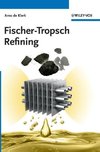
-
 Anglický jazyk
Anglický jazyk
Heat exchangers
Autor: Source: Wikipedia
Source: Wikipedia. Pages: 30. Chapters: Baffle (in vessel), Concentric tube heat exchanger, Downhole heat exchanger, Dynamic scraped surface heat exchanger, Flue-gas condensation, Fouling, Grate heater, Jacketed vessel, Micro heat exchanger, Pillowplate,... Viac o knihe
Na objednávku
14.94 €
bežná cena: 16.60 €
O knihe
Source: Wikipedia. Pages: 30. Chapters: Baffle (in vessel), Concentric tube heat exchanger, Downhole heat exchanger, Dynamic scraped surface heat exchanger, Flue-gas condensation, Fouling, Grate heater, Jacketed vessel, Micro heat exchanger, Pillowplate, Plate fin heat exchanger, Plate heat exchanger, Regenerative heat exchanger, Shell and tube heat exchanger, Thermal wheel, Waste heat recovery unit, Wellman Group. Excerpt: Fouling is the accumulation of unwanted material on solid surfaces to the detriment of function. The fouling material can consist of either living organisms (biofouling) or a non-living substance (inorganic or organic). Fouling is usually distinguished from other surface-growth phenomena in that it occurs on a surface of a component, system or plant performing a defined and useful function, and that the fouling process impedes or interferes with this function. Other terms used in the literature to describe fouling include: deposit formation, encrustation, crudding, deposition, scaling, scale formation, slagging, and sludge formation. The last six terms have a more narrow meaning than fouling within the scope of the fouling science and technology, and they also have meanings outside of this scope; therefore, they should be used with caution. Fouling phenomena are common and diverse, ranging from fouling of ship hulls, natural surfaces in the marine environment (marine fouling), fouling of heat-transfer components through ingredients contained in the cooling water or gases, and even the development of plaque or calculus on teeth, or deposits on solar panels on Mars, among other examples. This article is primarily devoted to the fouling of industrial heat exchangers, although the same theory is generally applicable to other varieties of fouling. In the cooling technology and other technical fields, a distinction is made between macro fouling and micro fouling. Of the two, micro fouling is the one which is usually more difficult to prevent and therefore more important. Following are examples of components that may be subject to fouling and the corresponding effects of fouling: Macro fouling is caused by coarse matter of either biological or inorganic origin, for example industrially produced refuse. Such matter enters into the cooling water circuit through the cooling water pumps from sources like the open sea, rivers or lakes. In closed circuits, like cooling towers, t
- Vydavateľstvo: Books LLC, Reference Series
- Rok vydania: 2015
- Formát: Paperback
- Rozmer: 246 x 189 mm
- Jazyk: Anglický jazyk
- ISBN: 9781155208435



 Nemecký jazyk
Nemecký jazyk 








